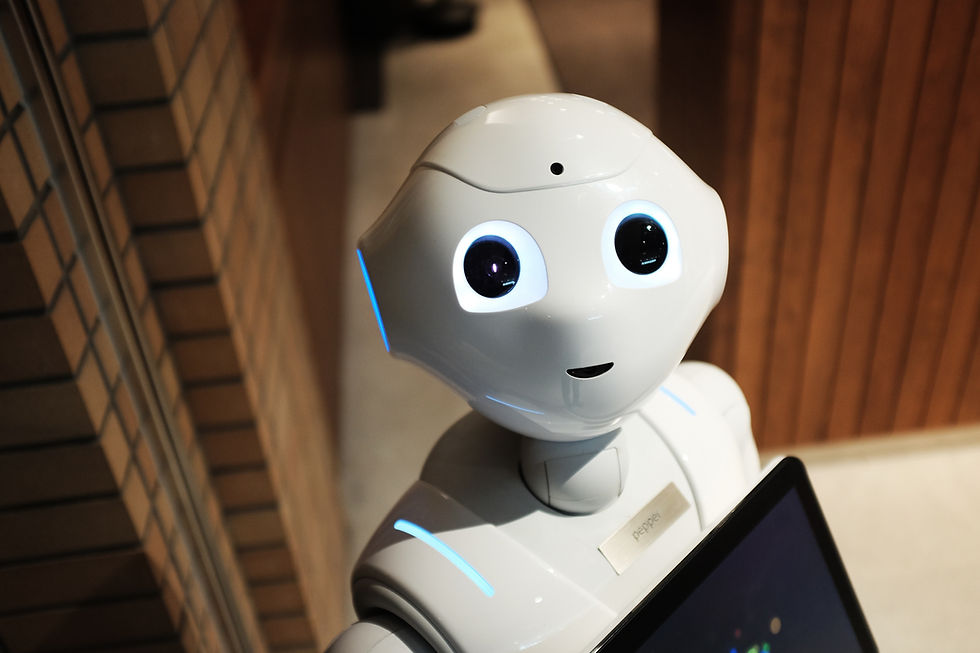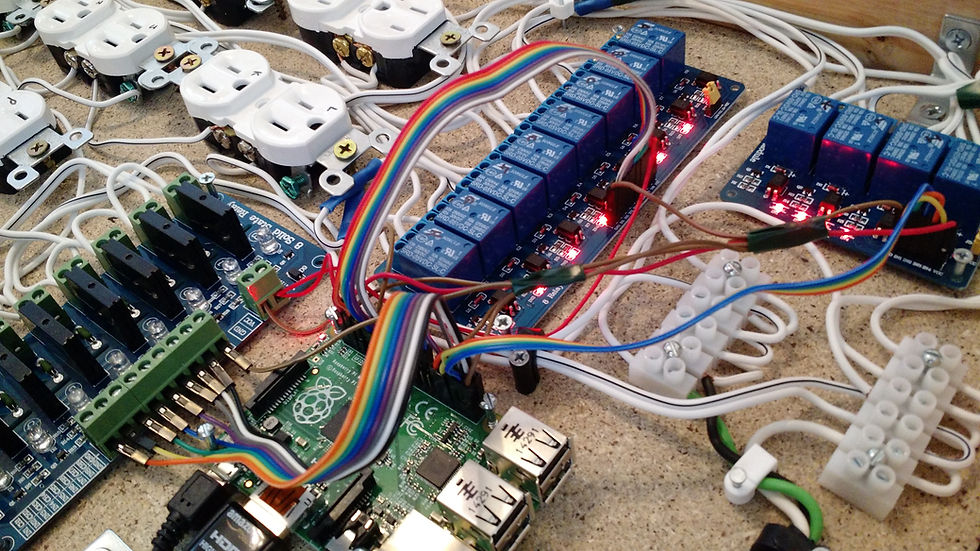Artificial Intelligence
- Debjoyti Louha
- May 13, 2021
- 4 min read

While artificial intelligence is capable of performing common sense tasks in the real world, it is capable of processing and analyzing data much faster than a human brain could. In fact, AI has evolved to make predictions more accurate than humanly possible, and it processes large amounts of data much faster. [Sources: 10, 17]
Combined with machine learning and emerging AI tools, RPA can automate a large portion of the workplaces in companies by enabling its tactical bots to pass intelligence to AI and respond to process changes. Over time, it seems likely that the same improvements in intelligence that we see in other areas of AI would be incorporated into physical robots. The long-term goal is general intelligence, a machine that surpasses human cognitive abilities in some tasks. As AI develops, machines will develop their intelligence based on more and more data, ultimately leading to machines that can build better versions of themselves than they can build through physical action. [Sources: 0, 6, 10, 12]
Artificial intelligence (AI) would be an important part of the future of human-machine interaction, not just in robotics. Artificial intelligence means letting computers and their computer-controlled robots (software) think in a similar way to intelligent humans. [Sources: 1, 9]
The basis of machine learning is that a machine, when it is learned to do everything step by step, and can be programmed to think, can learn to work by observing its mistakes and learning from them. There is no need to program the machine to learn by imitating the actions of man. [Sources: 5, 15]
Today, machines are also doing things that were previously only done by humans, things that I think demonstrate a higher level of intelligence, such as mathematical discoveries that seem to support human AI. We have seen that, although algorithms have not improved much, big data and massive computer technology have enabled artificial intelligence to learn with brute force. [Sources: 1, 12]
I would say that artificial intelligence is a terminator figure who can act and think for himself. Strong AI says actions can be real intelligence, and machines act intelligently, but so-called "weak AI" doesn't. [Sources: 1, 15]
Indeed, most of us interact with artificial intelligence in some form every day, and some analysts expect humans to become complex digital systems. As John Allen argued in an April 2018 paper, such systems have the three qualities that make up the essence of "artificial intelligence." Typically, AI systems exhibit the following behaviors associated with human intelligence: problem solving, decision-making, and communication. [Sources: 3, 11, 14, 17]
We can also distinguish this subset from the intelligence that is in AI machines, better known as robots. By combining human intelligence with artificial intelligence, the overall classification system achieves more and costs less. Extensive research on artificial intelligence has also divided them into three different categories: human, machine and machine - to machine. [Sources: 2, 13, 15]
In short, recent progress in integrating intentionality, intelligence, and adaptability into AI systems and algorithms has been made only recently. There has been great progress in creating artificial general intelligence (AGI), which is known for a wide range of skills and could perform tasks that the human brain cannot or cannot perform as well as it can with some tasks. [Sources: 4, 14]
As early as the 1950 "s, the fathers of the field (Minsky and McCarthy) described artificial intelligence as a capacity to perform tasks that would previously have been considered necessary for human intelligence. In 1950, we had a culturally assimilated generation of people with limited intelligence in their heads. [Sources: 3, 12]
The field of artificial intelligence is still in its infancy, and many more inventions are still to come. Some experts predict that networked artificial intelligence will increase human effectiveness, but also threaten human autonomy, agency, and ability. I am talking about the vast possibilities that computers can have to keep up with or surpass the capabilities of human intelligence. The result, which would mean that artificial intelligence is possible on a human level, would depend on what else could be gleaned from general human intelligence, which is artificially replicable. [Sources: 1, 7, 11]
The Simplilearnas machine learning course familiarizes you with machine learning, a form of artificial intelligence that automates data analysis by allowing a computer to learn from experience and adapt to perform specific tasks without explicit programming. To learn more about where we can today highly qualify and where artificial intelligence is used, join the AI course and understand the details of high skill. [Sources: 15, 16]
A key driver of AI is to link computer functions with human intelligence, for example, for learning and problem solving. AI can be achieved by studying how the human brain thinks, how humans learn, decide, and work to solve problems, and then using the results of these studies as a basis for developing intelligent software systems. [Sources: 9]
While traditional AI aims to increase the intelligence quotient of the computer, the Nouvelle AI focuses on enabling robotic autonomy. While AI tools provide companies with a range of new functionalities, the use of artificial intelligence also raises ethical questions, as AI systems, for better or worse, will reinforce what they have already learned. One of the first applications of what later became known as rule-based AI was the development of systems over which humans had little control in their evolving systems, such as speech recognition systems. [Sources: 1, 8, 10]
Sources:
[0]: https://www.edx.org/learn/artificial-intelligence
[1]: https://iep.utm.edu/art-inte/
[2]: https://www.thedifferenceengine.tech/blog/2019/11/an-introduction-to-artificial-intelligence-the-four-types-of-ai
[3]: https://www.zdnet.com/article/what-is-ai-everything-you-need-to-know-about-artificial-intelligence/
[4]: https://www.newscientist.com/definition/artificial-intelligence-ai/
[5]: https://www.bernardmarr.com/default.asp?contentID=963
[6]: https://www.ncbi.nlm.nih.gov/pmc/articles/PMC6616181/
[7]: https://www.iotforall.com/8-helpful-everyday-examples-of-artificial-intelligence
[8]: https://www.pcmag.com/news/what-is-artificial-intelligence-ai
[9]: https://www.tutorialspoint.com/artificial_intelligence/artificial_intelligence_overview.htm
[10]: https://searchenterpriseai.techtarget.com/definition/AI-Artificial-Intelligence
[11]: https://www.pewresearch.org/internet/2018/12/10/artificial-intelligence-and-the-future-of-humans/
[12]: https://sitn.hms.harvard.edu/flash/2017/history-artificial-intelligence/
[13]: https://emerj.com/ai-sector-overviews/everyday-examples-of-ai/
[14]: https://www.brookings.edu/research/what-is-artificial-intelligence/
[15]: https://www.mygreatlearning.com/blog/what-is-artificial-intelligence/
[16]: https://www.simplilearn.com/tutorials/artificial-intelligence-tutorial/what-is-artificial-intelligence
[17]: https://www.businessnewsdaily.com/9402-artificial-intelligence-business-trends.html








Comments